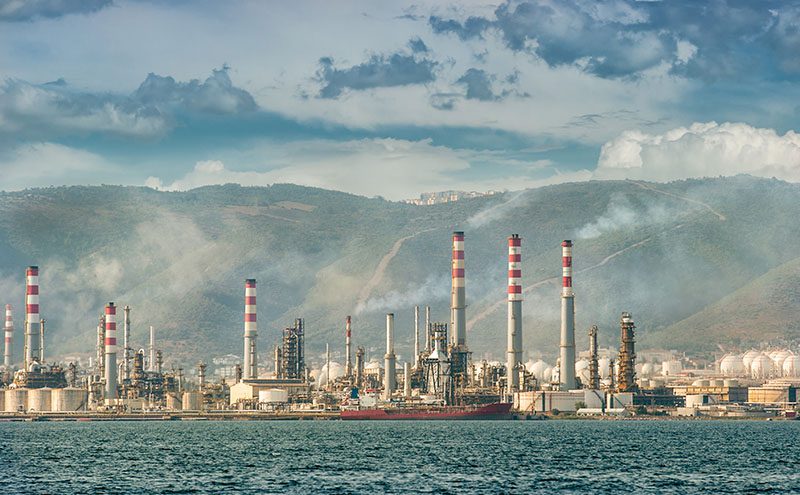
· PwC analysis shows that carbon intensity of the global economy fell by 2.6% in 2016 – a clear step change from business as usual
· Worldwide country progress on average falls a long way short of the 6.3% annual reductions needed to limit warming to two degrees
· Indonesia, Argentina, Turkey and South Africa all had emissions growth which exceeded their GDP growth.
· UK and China lead the G20 on clean growth, decarbonising their economies by 7.7% and 6.5% respectively in 2016 – the result of tackling coal consumption and improving energy efficiency while still growing their economies.
While countries have cut carbon intensity in their economy by around 2.6% over the past three years, this remains less than half of what is required to limit global warming to well below two degrees, PwC warns in its latest report, Low Carbon Economy Index 2017: Is Paris Possible?
Now in its ninth year, the firm’s Low Carbon Economy Index (LCEI), which tracks G20 countries’ progress in reducing the carbon intensity of their economy (i.e. energy-related greenhouse gas emissions per million dollars of GDP), noted that this is a step change from the historical rate – an average of 1% per year up to 2014.
The UK and China are the only countries in the Index to reduce their carbon intensity in line with the two degrees goal.
The 2017 LCEI appears to reveal that:
· Global emissions growth slowed in 2016, rising only 0.4% while global GDP growth was 3.1%. Our analysis each year shows that carbon intensity has been falling at around 2.6% for the past three years.
· Global carbon intensity fell by 2.6% which continues the step change in decarbonisation since 2014. The E7 achieved a more rapid reduction at 4.2% while the G7 decarbonised at 2.9%.
· Top performers, such as the UK, China, Mexico and Australia, all reduced their emissions while growing their economies.
· Countries at the bottom of the Index, including Indonesia, Argentina, Turkey and South Africa all had emissions growth which exceeded their GDP growth.
Jonathan Grant, Director of Climate Change at PwC and LCEI co-author, commented:
“As countries prepare to discuss the process for raising the ambition of their national targets at the next round of climate talks in Bonn next week, our report emphasises the fact that the Paris Agreement will only be possible if they are serious about accelerating action.
“When it comes to action on climate change and the two degrees goal, the gulf between the best and worst performing nations is widening – and this creates problem for business.
“Companies are being encouraged by investors and others to assess the risks of two degrees scenarios. But they’re not forecasting or planning on a two degrees outcome, because the signals from governments just aren’t there right now.
“Despite the increase in carbon pricing regulation in countries around the world, the price signal is often too feeble to prompt significant low carbon investment. Many companies are now planning for a range of potential outcomes including an increase in extreme weather and other climate impacts.”
UK and China lead on clean growth – and the role of coal
The UK and China are the only countries that exceeded the decarbonisation rate needed to meet the two degrees goal.
The UK has decarbonised at almost three times the global average rate. This was driven by a fall in emissions of 6% caused by a switch from coal to gas and lower energy consumption. The UK has achieved the highest average decarbonisation rate since 2000.
Plans to close all coal power stations by 2025 played a role as coal consumption fell by 52%.
Gas and solar have filled this gap, as hydro and wind power fell due to low rainfall and wind speeds.
As the transition from coal is almost complete, the UK will need to tackle other emission sources, in particular in heating and transport.
China follows the UK’s leading position. As the world’s largest energy and coal consumer, a reduction in coal of 1.4% due to new energy and environmental policies has had a significant impact on its carbon intensity.
China also installed the most renewable energy power capacity in 2016, surpassing the US.
A shift in its economy also plays a role as service growth outperformed growth in more energy intensive sectors.
Despite the UK and China significantly curbing their coal consumption, other countries such as India, Turkey and Indonesia have filled the gap. Therefore, as coal consumption has shifted, it only fell by 1.7% and still accounts for a third of the world’s energy needs.
Oil and gas consumption grew at 1.58%. Solar and wind grew by 30% and 15.9% respectively but still make up a small part of global energy consumption.






